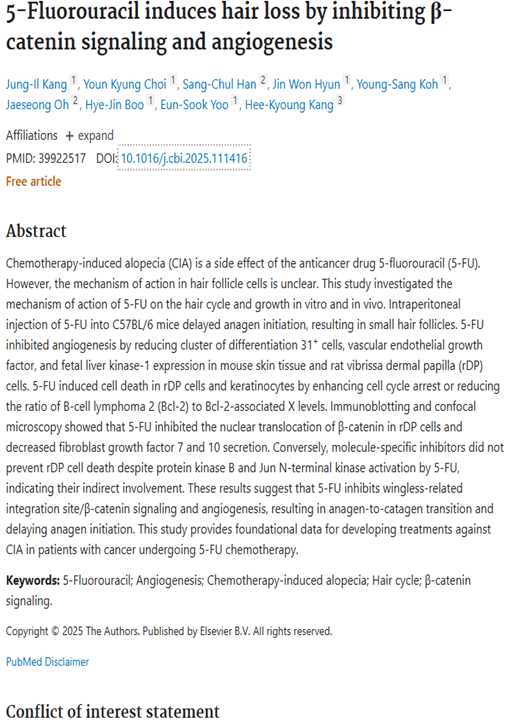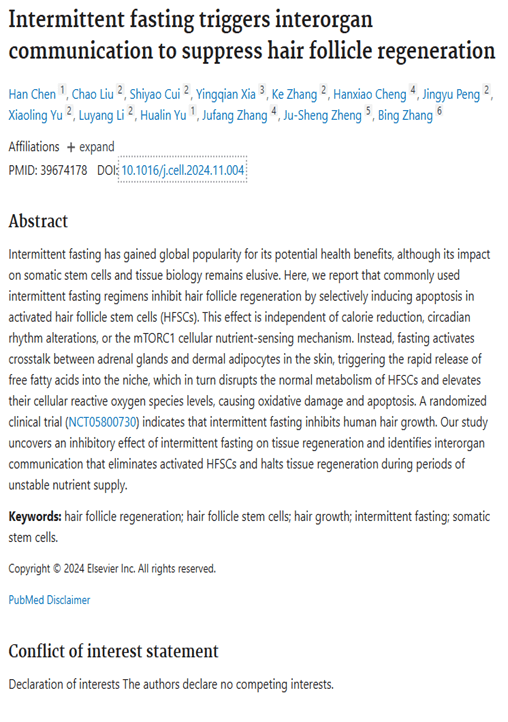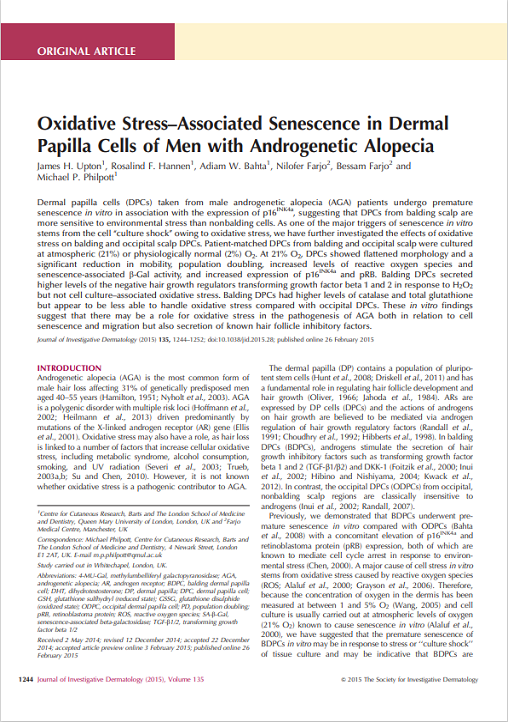
#26 5-Fluorouracil induces hair loss by inhibiting β-catenin signaling and angiogenesis
Jung-Il Kang, Youn Kyung Choi, Sang-Chul Han, Jin Won Hyun, Young-Sang Koh, Jaeseong Oh, Hye-Jin Boo, Eun-Sook Yoo, Hee-Kyoung Kang
This research paper aims to investigate the effects of 5-fluorouracil (5-FU), a component of chemotherapy drugs, on dermal papilla (DP) cells and to elucidate the mechanism by which it induces hair loss through regulation of Wnt/β-catenin signaling, angiogenesis, and the expression of growth factors. Although 5-FU generally causes less hair loss compared to other anticancer drugs, its exact mechanism of action has not been clearly understood.
The research team analyzed the effects of 5-FU using both mouse models and cell experiments. The results showed that 5-FU delays the transition of the hair cycle into the anagen (growth) phase and inhibits angiogenesis around the hair follicles. This suggests that reduced blood supply hinders hair growth.
At the cellular level, 5-FU induced cell cycle arrest and apoptosis in dermal papilla cells. Notably, it suppressed the Wnt/β-catenin signaling pathway, a crucial signaling system that regulates hair growth and the hair cycle. Additionally, the expression of vascular endothelial growth factor (VEGF) and its receptor Flk-1 was reduced, indicating a diminished capacity for blood vessel formation.
In summary, 5-FU induces hair loss by disrupting the cells and signaling pathways involved in hair growth, as well as by impairing angiogenesis. Previously, chemotherapy-induced hair loss was mainly considered a problem of epidermal cells. However, this study revealed that 5-FU also has a fatal impact on dermal papilla cells, a deeper structure within the hair follicle.
These findings could provide an important foundation for developing treatments for hair loss in patients undergoing chemotherapy with 5-FU.






